Combining the essence of the flora that surrounds her Virginia home with her Scandinavian esthetic, Lotta Helleberg uses botanical contact printing (AKA eco-printing) as a foundation for her fiber art. Embracing the surprises inherent in the process takes Lotta’s art journey to places that both challenge and delight her.

How did you find yourself on an artist’s path? Always there? Lightbulb moment? Dragged kicking and screaming? Evolving?
Creativity and artistic pursuits have always been part of my identity. I grew up in Sweden with several creative role models in my family. My aunt, Gunilla Petersson, is a well renowned tapestry artist, and my mother is an extraordinary seamstress, knitter, and maker of all kinds. With no formal art education, I found my art career via writing, graphic design, art direction, and textile design. For the past ten years, I have worked as a full-time professional artist, focusing on fiber, printmaking, and book art.
What inspires your work? How does your environment influence your creativity?
My love for nature, environmental issues, and sustainability guide my art. Botany and plant life become symbols for much larger themes about our world and how we care for it. My immediate surroundings, my garden and my neighborhood, clearly influence my work. Not only as creative inspiration, but also as a provider of my art materials. I collect the plant matter I use for dyeing and printing locally, and I also grow a variety of dye plants in my own garden.
As an Amazon Associate I earn from qualifying purchases. Read more about our affiliate linking policy.


My Scandinavian heritage has also influenced my aesthetics and material choices. I love the traditionally sparse and elegant design that is so typical for my home country. As well as the Nordic tendency to celebrate quality and tradition while experimenting with new ideas and solutions.


For those who are unfamiliar, what should we know about botanical contact printing?
Botanical contact printing, (also called eco-printing) is a method where the leaves are positioned on fabric or paper, clamped or rolled tightly, and then processed in simmering water. The impressions left on the materials are from the pigments released by the leaf. I use this technique often, although not exclusively, in my work.

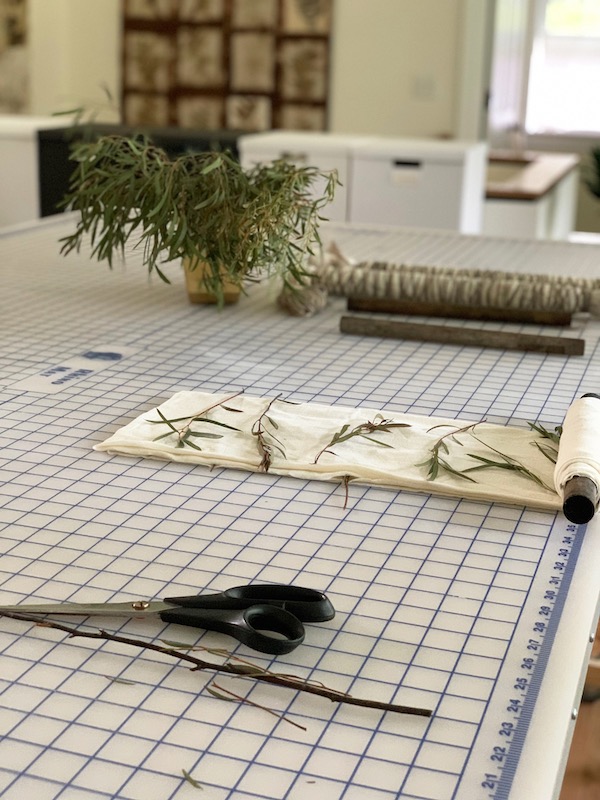
What is it about botanical printing that holds your interest?
Botanical contact printing is not an exact science, but the element of surprise has become part of the allure for me. Over time you learn what plants are suitable and under what circumstances, but the outcome is not easy to predict. Finding joy in unexpected results and having to let go of perfection are just a couple of reasons why I love this technique.
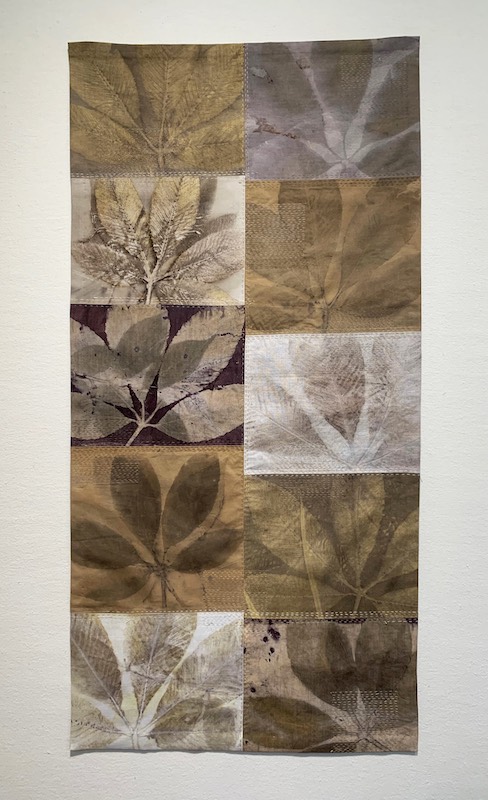
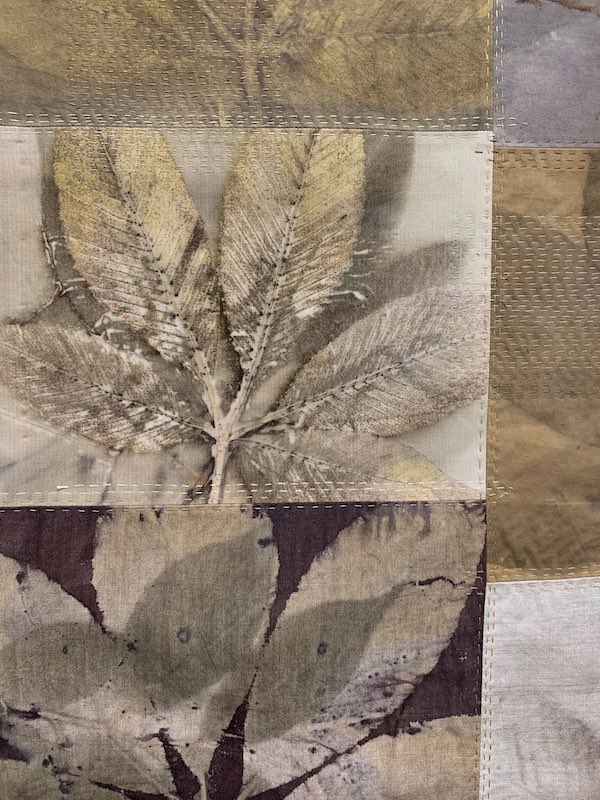
When you begin a piece, is the image formed in your mind before printing, or does the print itself spark subsequent steps?
The process drives my work. The printing is definitely seasonal, meaning you need to work when the plants are available. The prints may not always have an intended use initially, but over time they will be incorporated into projects or become a starting point for a new piece or series. Occasionally, I will plan out my work in a more organized way. Especially when working towards a larger exhibition with a conceptual theme or structure.

Are there recurring themes in your work? Do you do series work?
I like to depict plants that are either insignificant or even undesired. By focusing on botanical details, I hope the viewer will learn to appreciate the beauty of the natural world. I often use repetition and grid patterns to emphasize small variations that occur within the same plant species. “Remains” is an ongoing series of work that features scanned digital images as well as botanical contact prints. Each piece is 10” x 10” and they are small studies and textile collages, focusing on plants on the verge of disintegration and decay. I also have a series of work that portray invasive species and noxious weeds. Many of these plants engulf our landscape, suppressing and entangling native plants and the wildlife who live within. I use their shapes, silhouettes, and pigmentation to create everlasting reminders about natures fragility as well as resilience.

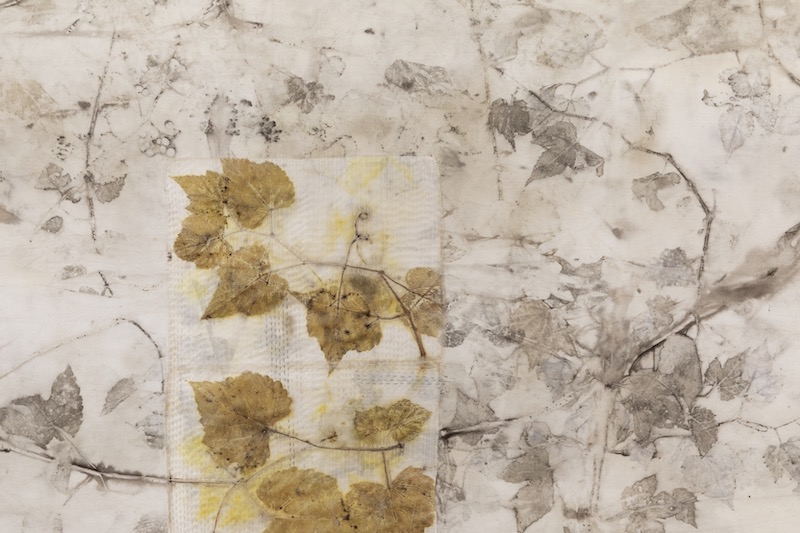
Can you tell us about the inspiration and process of one of your works? How does a new work come about?
Two recent works that I love are Porcelain vine I & Porcelain vine II. The base for the printed vines is a cotton drop cloth that I used for years in my printing and dye process. The background was already saturated with drips and stains prior to being layered with tangled masses of porcelain vine, a beautiful but extremely invasive plant here in central Virginia.
I placed the second drop cloth on top of the plants, folded everything up and tightly tied before simmering in a water bath. These pieces are large, and the impressions on the two cloths are mirror images which make them work well as a diptych. I embellished both with additional porcelain vine prints on silk, densely stitched in place throughout. These works were completed last year and have been included in several exhibits, including “The Festival of Quilts” in Birmingham, UK, in August, 2019.


Do you have a mentor?
Botanical contact printing is a widespread technique nowadays. But in 2010 when I first was introduced to it, it was more uncommon. Australian artist India Flint was one of the first to explore and develop the artform, especially the use of eucalyptus in botanical printing.
I have been fortunate enough to participate in several classes and workshops with India over the years. I respect her for her deep knowledge of plants, plant color, printing techniques, and sustainable practices. Although she is not my mentor in a formal sense, we have become friends and I am grateful for her guidance and generosity.

What does your creative space look like?
I am working in a studio behind our house, that we built last year. It is on the second floor, with a bank of windows overlooking our backyard. A large work table anchors the space, and I have a couple of smaller work stations for things like sewing, book binding, and printmaking.

It is a fantastic light-filled space and I feel so lucky. The studio features an outdoor dye-station that I use as often as the weather permits. Commuting to work by strolling across my yard with my dog in tow is just one of the perks.

What are the indispensable tools and materials in your studio? How do they improve your work?
There are many indispensable tools in my line of work, such as scissors, needles and my sewing machine, for example. But I guess the most appreciated things are the two large propane cookers that I use for heating up my dye baths—and the plants themselves of course.

What is your favorite lesser-known tool for your trade? Have you taken something designed for another use and repurposed it for your studio?
Chop sticks. I use them for turning seams and corners, stirring paint, and fishing things out of the dye bath.


Do you use a sketchbook or journal? How does that help your work develop?
I have several journals and sketchbooks, but I only keep up with my bullet journal regularly. It keeps me on task, and on top of my schedule. Every time I try to make daily entries in my sketchbook it becomes contrived and forced. It makes more sense for me to use it occasionally when inspired, or when I have a specific project in mind that I need to work out visually. I love going back and reviewing sketchbooks from the past. I always find something that sparks new ideas.

What plays in the background while you work? Silence? Music, audiobooks, podcasts, movies? If so, what kind?
I alternate between podcasts and music while I work. Mostly obscure things like the Swedish Podcast “Nördic Knitting” (a wordplay on Nerdy and Nordic in Swedish), which is all about knitting techniques, patterns, and designers. I also like Brené Brown’s “Unlocking Us”. My music taste runs towards folk and Americana with a little classic rock and punk sprinkled in: things not too complicated, but with meaning. Recent favorites are Jason Isbell, The Decemberists, J.S. Ondara, and First Aid Kit.
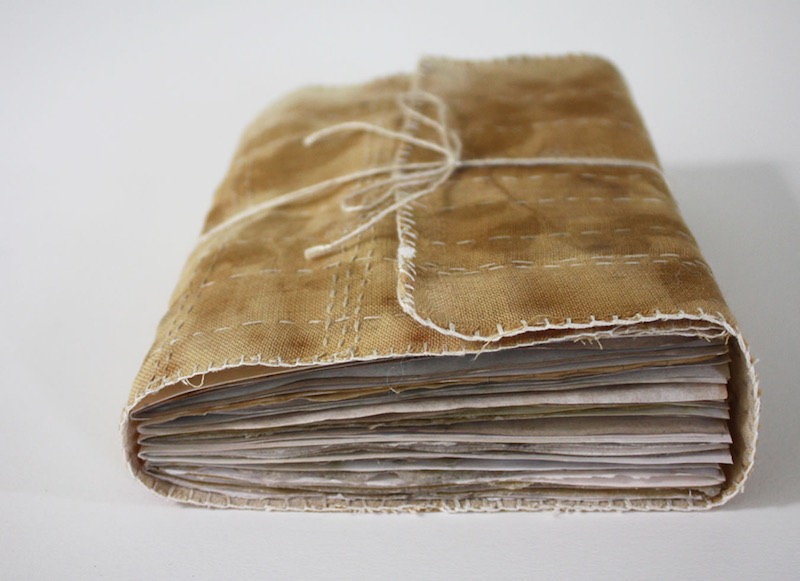
What was the biggest challenge that you encountered on your creative journey? What did you learn from it?
My struggles are often related to artistic genres and mediums. Working primarily with fiber, I find it difficult to find my place in the art world. Too often I am toeing the line between art and craft. Part of me wants to belong in the contemporary fine art category, while another part really wants to embrace the tradition and history that makes up textile art in particular. It is an ongoing internal conversation.
Do you think that creativity comes naturally to people, or do you think creativity is a skill that people can learn?
I believe all people are creative in their own way. You need creativity in most aspects of life —to cook a good meal, grow a houseplant, or solve a math problem. I also think we can train ourselves to utilize our creativity in the best possible way. That part does not always come naturally.

What do you learn about who you are through your art?
Art has made me feel more confident in my abilities. I have always been sensitive and self-critical, but my art practice makes me realize that I have found my place and that I not only make things that resonate with my own aesthetics and desires, but that my art is appreciated and cherished by others as well.
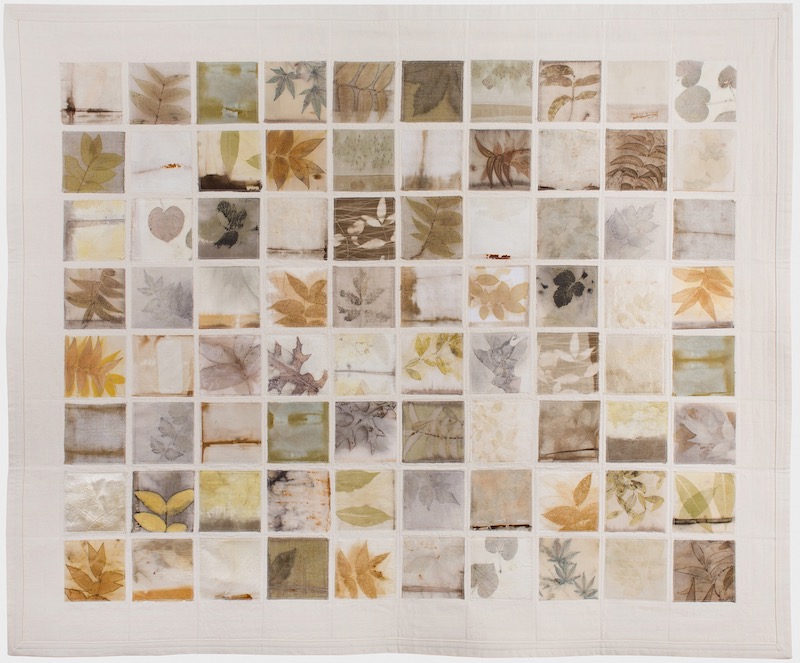
Tell us about your website. What do you hope people will gain by visiting?
My website is evolving, as I try to keep it relevant and current. It mainly lists information about my recent work, exhibitions, artistic statements, and descriptions of my processes. The pandemic, and the self-isolation that has followed, has made me realize that our online presence is more important than ever. In the near future I would like to expand the site to include video presentations and an online store, offering smaller works for sale. I am also active on Instagram, which I love for its image driven content and ease of communication. My Instagram handle is lottahelleberg and the website address is www.lottahelleberg.com.

Where can people see and purchase your work?
I am a member of McGuffey Art Center here in Charlottesville, Virginia and my work can often be found in the group exhibits that they offer. The most recent one, In the Current, opens on September 29, and can be viewed by appointment. I will also have work in an exhibit at the Shibori Museum in Kyoto, Japan, this fall. It is part of an invitational group exhibit called Ongoing Conversations: Blended. And as I mentioned before, be on the lookout for the online store on my website opening in October.
Interview posted September 2020
Browse through more botanical dying projects and inspiration on Create Whimsy.
